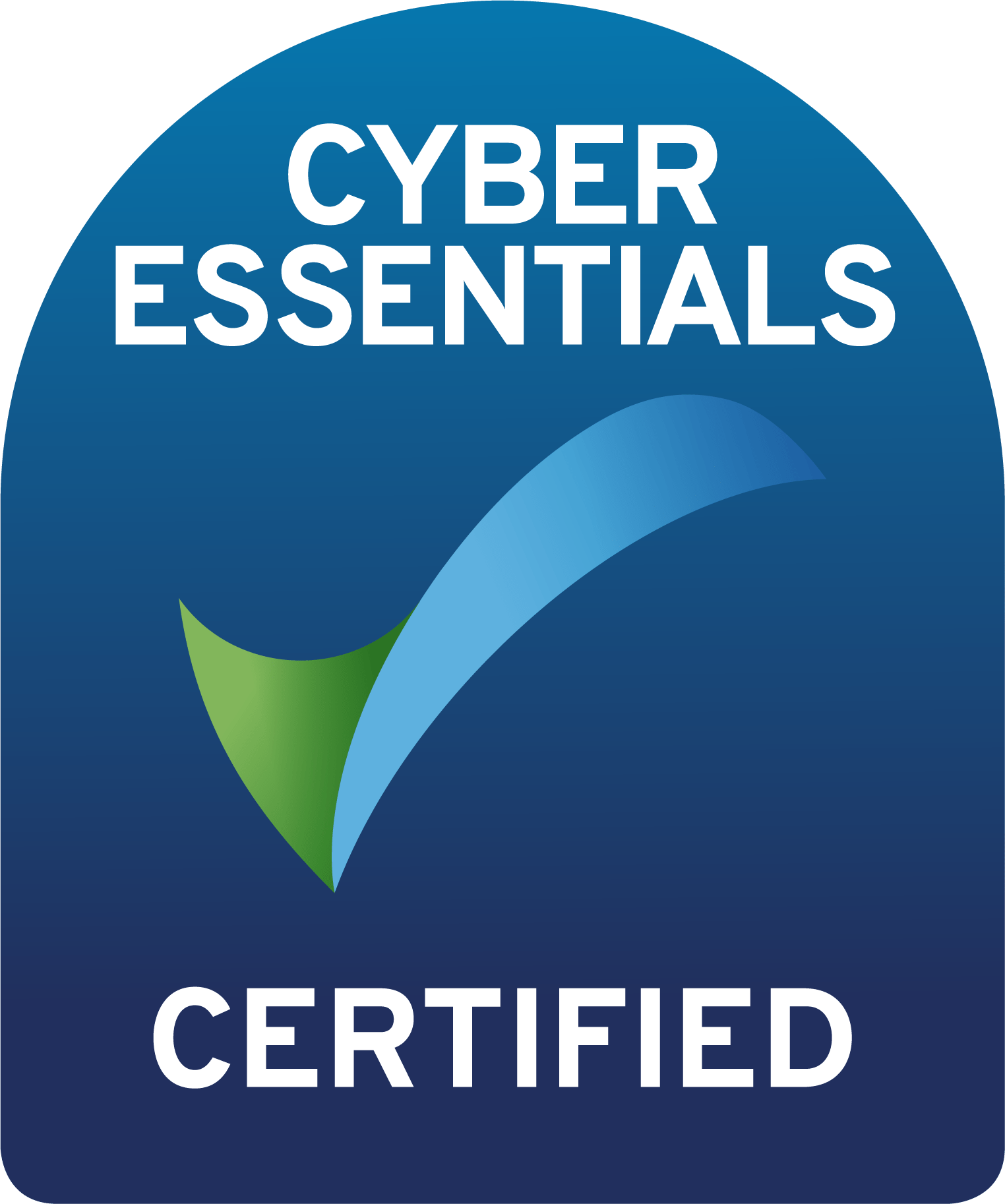Festive Closure Information
Our campuses close on Tuesday 23rd December and re-open on Monday 5th January 2026.
Students will return to timetabled lessons on Monday 5th January 2026.
For more information, please click the button below.






Early Years Practitioner Apprenticeship
Are you looking for a new career direction, challenge or the opportunity to increase your understanding of working with children? Here at Colchester Institute we offer a supportive environment to extend your knowledge and skills to meet the rewarding challenges of working to support children’s learning and development. Then we have the course for you!
An Early Years Practitioner is found in a range of private and public settings including; full day care, children’s centres, pre-schools, reception classes, playgroups, nursery schools, home based provision, hospitals, social care settings, out of school environments and local authority provision to deliver the Early Years Foundation Stage (EYFS) requirements set by government for the learning, development and care of children from birth to 5 in both indoor and outdoor environments.
Looking for a new career, job or maybe a qualification to take your current role to the next level?
Previously apprenticeships were primarily aimed towards 16-18 year olds but government reforms introduced in March 2017 mean that there is no longer an upper age limit for commencing an apprenticeship, even if you already possess a degree or higher level qualification (all applicants must be eligible for funding).
Starting an apprenticeship is dependent on your age and whether you have secured an offer of an apprenticeship from an employer.
You can apply for an apprenticeship while you’re still at school, but you cannot start until you have officially left school and completed your exams.
You need to be 16 or over by the end of the summer holidays to start the apprenticeship. You may start an apprenticeship at 15 years of age if your 16th birthday is between the last Friday of June and 31st August and provided you have completed your exams.
Provided you have left school and have an employment offer in place, then starting employment as an apprentice can occur throughout the year.
If you successfully apply for a vacancy, you may be able to start employment straight away.
Likewise, if you are already in employment and your employer is looking to train you through an apprenticeship, sign-up and enrolment can take place quite quickly.
However, the start date for attending college for training, where required, or if delivered online, when sessions begin, will vary depending on the type of apprenticeship.
Some apprenticeships will have fixed attendance with training on-campus commencing at the start of the autumn term, with no availability for starting the training mid-year.
For other apprenticeships where the training is delivered entirely online, it may be possible to commence the training immediately.
Whichever delivery method applies, this will be communicated to you and your employer post-employment and sign-up.
If you are ready to make an application then please select the correct application button from the menu below.
| Level | Level 2 |
|---|---|
| Location | Colchester |
| Duration | Typically 12 months |
| Campus / Adult Skills Centre | Colchester Campus |
| Apprenticeship Funding Band (Levy paying employers) | £4,000 |
| Employer Contribution Fee (Non-levy paying employers) | £200 |
The broad purpose of the occupation is to work and interact directly with children on a day to day basis supporting the planning of and delivery of activities, purposeful play opportunities and educational programmes within the ethos of the setting. An EYP works as part of a professional team ensuring the welfare and care for children under the guidance and supervision of an Early Years Educator, teacher or other suitably qualified professional the Early Years Workforce.
Typical job titles include:
In their daily work, an employee in this occupation interacts with parents, children, colleagues and wider multi agency professionals and partners such as health visitors, social workers and speech and language therapists. Individuals will undergo all checks as per the EYFS requirements to ensure suitability to work with children. Due to the nature and level of responsibility it is not anticipated that the role would have any budgetary or leadership responsibilities.
They will be responsible for supporting child initiated and adult led activities based around the needs and interests of each individual child, supporting children’s learning through planned, purposeful play opportunities and educational programmes and working as part of a team to ensure each child feels safe and secure. An EYP will also support the observation and assessment of each child and contribute to their learning experiences and assist with the care needs of the individual child such as teeth, skin, hair, feeding, changing nappies and toileting under direction of a more senior member of the team. They will also work in partnerships with other colleagues, parents and/or carers or other professionals, with support from a more senior member of the team, to meet the individual needs of each child. They will also have a responsibility for ensuring that they recognise when a child is in danger and/or at risk of serious harm or abuse and contributing to the health and safety of the children, staff and others on the premises.
DUTY | KSBS |
|---|---|
Duty 1 Work in partnership with other colleagues, parents and/or carers or other professionals to meet the individual needs of each child in line with company policies and procedures. | K19 K21 K23 K24 K28 K29 |
Duty 2 Use play to support children to understand and encourage healthy life choices. | K14 |
Duty 3 Identify issues of safeguarding and child protection, ensuring that the welfare and safety of children is promoted and safeguarded and to report any child protection concerns to the person in charge. | K5 K6 K7 K26 |
Duty 4 Carryout self-reflection and use continuous professional development opportunities to improve practice. | K27 |
Duty 5 Undertake specific tasks related to the safety and hygiene of the children and the cleanliness of the setting. | K8 K9 K10 K11 K12 K13 K22 |
Duty 6 Use their knowledge of child development to work with parents and carers to improve children outcomes and wellbeing, including those with disabilities and additional needs. | K1 K2 K3 K4 K13 |
Duty 7 Contribute to the planning and organise activities and children’s individual experiences which will support and extend the children’s learning in line with the Early Years Foundation Stage. | K16 K17 K18 K22 K29 |
Duty 8 Communicate and engage with children to support their learning and development. | K15 K25 |
Duty 9 Support the collection of accurate and up-to-date records which identify children’s individual needs, abilities and progress and use these as a basis for future planning. | K18 |
Duty 10 Support the wellbeing of all children including those with additional needs and disabilities. | K5 K14 K20 K22 |
What knowledge and skills are covered?
An Early Years Practitioner knows and understands:
Knowledge
K1: How children learn and the expected pattern of babies and children’s development from birth to 5 years and their further development from ages 5 to 7. Areas of development include: cognitive, speech, language and communication, physical, emotional, social, brain development and literacy and numeracy.
K2: The importance to children’s holistic development of, speech, language and communication, personal, social and emotional development, physical development and literacy and numeracy.
K3: How babies’ and young children’s learning and development can be affected by their stage of development, well-being and individual circumstances.
K4: The significance of attachment, the key person’s role and how transitions and other significant events impact children.
K5: The legal requirements and guidance on safeguarding, security, confidentiality of information and promoting the welfare of children.
K6: Safeguarding policies and procedures, including child protection and online safety.
K7: Own role and responsibilities in relation to safeguarding and security, including child protection, reporting and confidentiality of information.
K8: The legal requirements and guidance for, Health and safety and Security
K9: Risks and hazards in the work setting and during off site visits.
K10: Own role and responsibilities, including reporting, in the event of a baby or young child requiring medical/ dental attention, a non-medical incident or emergency and identifying risks and hazards
K11: The work settings procedures for receiving, storing, recording, administration and the safe disposal of medicines.
K12: The signs and symptoms which may indicate that a child is injured, unwell (including common childhood illnesses and allergies) or in need of urgent medical/ dental attention.
K13: The impact of health and wellbeing on children’s development.
K14: The current dietary guidance for early years and why it is important for babies and young children to have a healthy balanced diet and be physically active.
K15: Ways to communicate with all children appropriate for all their stages of development, including those whom English is an additional language (EAL) or who have delayed speech.
K16: The statutory framework, including the learning and development requirements for babies and young children that must be implemented by your setting.
K17: The terms adult led activities, child initiated activities and spontaneous experiences.
K18: The key stages in the observation, assessment and planning cycle and the value of observation for the child, the parents/ carers and the early years setting in planning the next steps.
K19: How to refer concerns about a baby’s or child’s development.
K20: The statutory guidance in relation to the care and education of children with special educational needs and disabilities.
K21: Partnership working (including parents/carers) in relation to working effectively with children with special educational needs and disabilities.
K22: What specialist aids, resources and equipment are available for the children you work with and how to use these safely.
K23: Own role and expected behaviours and the roles of colleagues and the team.
K24: How to access work place policies and procedures and your own responsibilities and accountabilities relating to these.
K25: How behaviour can impact on babies and children and influence them.
K26: Own responsibilities when following procedures in the work setting for reporting, whistleblowing, protecting and promoting the welfare of children, safeguarding, confidentiality, information sharing and use of technology.
K27: The importance of reflective practice and continued professional development to improve own skills and early years practice.
K28: The roles and responsibilities of other agencies and professionals that work with and support your setting, both statutory and non-statutory.
K29: The importance of the voice of the child, parental/carer engagement, the home learning environment and their roles in early learning.
Skills
S1: Support babies and young children through a range of transitions.e.g moving onto school, moving house or the birth of a sibling
S2: Recognise when a child is in danger, at risk of serious harm or abuse and explain the procedures to be followed to protect them. Types of abuse including: domestic, neglect , physical, emotional, and sexual abuse.
S3: Identify risks and hazards in the work setting and during off site visits.relating to both children and staff
S4: Demonstrate skills and understanding for the prevention and control of infection, including hand washing, food preparation and hygiene, dealing with spillages safely, safe disposal of waste, using correct personal protective equipment.
S5: Use equipment, furniture and materials safely, following the manufacturers’ instructions and setting’s requirements.
S6: Encourage children to be aware of personal safety and the safety of others and develop personal hygiene practices (including oral hygiene).
S7: Promote health and wellbeing in settings by encouraging babies and young children to consume healthy and balanced meals, snacks and drinks appropriate for their age and be physically active through planned and spontaneous activity throughout the day, both indoors and outdoors.
S8: Carry out respectful care routines appropriate to the development, stage, dignity and needs of the child, including eating (feeding and weaning/complimentary feeding), nappy changing procedures, potty/toilet training, care of skin, teeth and hair and rest and sleep provision.
S9: Communicate with all children in ways that will be understood, including verbal and non-verbal communication.
S10: Extend children’s development and learning through verbal and non-verbal communication.
S11: Encourage babies and young children to use a range of communication methods.
S12: Use a range of communication methods to exchange information with children and adults.
S13: Work with colleagues to identify and plan enabling environments, activities (both indoors and outdoors), play opportunities and educational programmes (both adult led and child initiated) to support children’s holistic development through a range of play, creativity, social development and learning.
S14: Implement and review activities to support children’s play, creativity, social development and learning and clear up after activities.
S15: Observe children, assess, plan and record the outcomes, sharing results accurately and confidentially in line with expected statutory framework and setting’s requirements.
S16: Use learning activities to support early language development.
S17: Support children’s early interest and development in mark making, writing, reading and being read to.
S18: Support children’s interest and development in mathematical learning including numbers, number patterns, counting, sorting and matching.
S19: Support the assessment, planning, implementation and reviewing (the graduated approach) of each baby’s and young child’s individual plan for their care and participation.
S20: Work in ways that value and respect the developmental needs and stages of babies and children.
S21: Use feedback, mentoring and/or supervision to identify and support areas for development, goals and career opportunities.
S22: Work co-operatively with colleagues, other professionals and agencies to meet the needs of babies and young children and enable them to progress.
S23: Work alongside parents and/or carers and recognise their role in the baby’s/child’s health, well-being, learning and development.
S24: Encourage parents and/or carers to take an active role in the baby’s/child’s care, play, learning and development.
S25: Demonstrate how to share information with parents/carers about the importance of healthy balanced diets, looking after teeth and being physically active.
English & Maths
Apprentices without level 1 English and maths will need to achieve this level and apprentices without level 2 English and maths will need to take the tests for this level prior to taking the end-point assessment. For those with an education, health and care plan or a legacy statement, the apprenticeship’s English and maths minimum requirement is Entry Level 3. A British Sign Language (BSL) qualification is an alternative to the English qualification for those whose primary language is BSL.
Other mandatory qualifications
Apprentices will achieve a Level 2 Early Years Practitioner Qualification as part of their apprenticeship.
This section sets out the requirements for end-point assessment (EPA) for the Early Years Practitioner apprenticeship standard. It is for end-point assessment organisations (EPAOs) who need to know how EPA for this apprenticeship must operate. It will also be of interest to Early Years Practitioner apprentices, their employers and training providers.
Full time apprentices will spend a minimum of 12 months on-programme (before the gateway) working towards the occupational standard, with a minimum of 20% off-the-job training. All apprentices must spend a minimum of 12 months on-programme.
The EPA period should only start, and the EPA be arranged, once the employer is satisfied that the apprentice is deemed to be consistently working at or above the level set out in the occupational standard, all of the pre-requisite gateway requirements for EPA have been met and can be evidenced to an EPAO. The EPAO must confirm that all required gateway evidence has been provided and accepted as meeting the gateway requirements. The EPAO is responsible for confirming gateway eligibility. Once this has been confirmed, the EPA period starts.
As a gateway requirement and prior to taking the EPA, apprentices must achieve all approved qualifications mandated in the Early Years Practitioner standard.
These are:
Early Years Practitioner Qualification (level 2)
Please refer to the DfE list of approved Early Years Practitioner qualifications.
For level 2 apprenticeships, apprentices without English and mathematics at level 2 must achieve level 1 English and mathematics and take the tests for level 2 prior to taking their EPA. The EPA must be completed within an EPA period lasting typically 3 months, after the EPA gateway.
EPA must be conducted by an organisation approved to offer services against this apprenticeship standard, as selected by the employer, from the Education & Skills Funding Agency’s Register of Endpoint assessment Organisations (RoEPAO).
The EPA consists of 2 discrete assessment methods. The individual assessment methods will have the following grades:
Assessment method 1: Professional discussion underpinned by portfolio
· Fail
· Pass
· Distinction
Assessment method 2: Knowledge Test
· Fail
· Pass
· Distinction
Performance in the EPA will determine the overall apprenticeship standard grade of:
· Fail
· Pass
· Distinction
College attendance of one session once a week, and this will be confirmed post-application and sign-up.
All evidence and written assessments are completed through our online platforms. Learners will receive support from an assessor throughout the duration of the qualification.
Before you proceed to apply for an apprenticeship, please read through the information which relates to your age group below, and then select the correct application button from the menu located further down the page.
Aged between 15 and 18
The application window for joint applications for full-time courses and apprenticeships starting in September 2026 is open from Wednesday 1st October 2025.
In order to study an apprenticeship you must have an employer willing to take you on as an apprentice and have an offer of employment in place by September, ready for enrolment.
The information below applies to those:
- currently in year 11 and looking to study on an apprenticeship upon finishing school
- currently in year 11 and looking to make a joint full-time and apprenticeship application, so that both options are available to be pursued upon finishing school (although you can apply for both options you will eventually need to choose between a full-time programme or apprenticeship, you cannot do both at the same time)
- currently in year 12* on a full-time course and looking to find an apprenticeship to start after the end of the summer term
If you are interested in an Apprenticeship but do not yet have a contract of employment from an employer, we strongly advise you to apply for a full-time programme as well so you have a back-up. We will process both your full-time application and apprenticeship application until you inform us that you have secured an employer and have an Apprenticeship contract in place, at which point your apprenticeship application will take priority.
If you do have an employer with an Apprenticeship contract of employment in place, we still strongly advise that you apply for a full-time programme as well so you that you have a back-up in case this falls through.
Once you have read the above please click the red button underneath. Then click the button ’15 – 18 Years – Apply Online’ in the menu and you will be taken to the next stage of the application process.
*If you are currently in year 12 and 13, but looking to find an apprenticeship and switch mid-year then please contact our Apprenticeship Admissions Team where they will advise you on suitable vacancies.
If you are unsure about any of the above and would like to speak to our apprenticeships team directly then please contact us using the below:
01206 712043 – Applicant Enquiries or email:
Aged 19+
In order to study an apprenticeship you must have an employer willing to take you on as an apprentice and with an offer of employment in place.
Please read through the information below and follow the information that applies to your current status.
If you have found an employer willing to take you on as an Apprentice and they are ready to put a contract of employment in place, please click the red button located underneath this section, which will take you to the first stage of the application process. Then click the button ’19+ Years – How to Apply’ where you will be taken to the next stage of the application process.
I am already in employment and my employer would like to put me through an apprenticeship
If you are already in employment then please contact our Apprenticeship Admissions Team where they will work with you and your employer to complete the sign-up and enrolment onto the programme.
01206 712043 – Applicant Enquiries or email:
I don’t have an employer
If you do not have a contract offer of employment from an employer in place then there are other options available to you:
Apply for a vacancy
Employers can recruit for apprentice positions all year round. We have apprenticeship vacancies listed on our website throughout the year in a variety of industries and with employers small, medium and large.
Join Our Talent Pool
All you have to do is complete and submit our Talent Pool application form, attend a pre-screening assessment/interview and be available when contacted. We will then send your details along with your profile to employers looking for an apprentice, inform you if you are selected for interview, and send you guidance to prepare you for interview.
If you are unsure about any of the above and would like to speak to our apprenticeships team directly then please contact us using the below:
01206 712043 – Applicant Enquiries or email:
Employer Application Enquiries
If you would be interested to find out more about how this apprenticeship can work for your business or already have a member of staff who this apprenticeship would be perfect for please contact us using the ‘Hire an Apprentice: Enquire Here’ button in the menu below.
How is my business going to benefit from an Apprentice?
How can I fit this apprentice into my business?
An Early Years Practitioner will demonstrate the following behaviours:
B1: Care and compassion – provide the very best childcare to every child every day combined with the ability to identify opportunities for development.
B2: Honesty, trust and integrity – develop trust by working in a confidential, ethical and empathetic manner with a common sense and professional attitude.
B3: Positive work ethic – maintains professional standards within the work environment providing a positive role model for children.
B4: Being team-focused – work effectively with colleagues and other professionals.
B5: Commitment – to improving the outcomes for children through inspiration and child centred care and education.
B6: Work in a non- discriminatory way – by being aware of differences and ensuring all children have equal access to opportunities to learn, develop and reach their potential. Work in ways which consider fundamental British values including democracy, the rule of the law, individual liberty and mutual respect and tolerance of those with different faiths and beliefs.
B7: Professional Practice – be a reflective practitioner with a commitment to continued professional development adhering to legislation, policy and procedure with a positive disposition to work.
How is my business going to benefit from an ‘Intermediate Apprenticeship – Children and Young People’s Workforce’ Apprentice?
Apprenticeships are an excellent way to support your organisation by harnessing new talent or helping to up skill your existing workforce. An apprenticeship is your chance to employ an individual committed to learning and developing their skills within your organisation. An apprentice will be expected to work full-time, with time spent away from the workplace to study for a nationally recognised qualification. The best part is that an apprentice is a contracted employee, meaning you get a full resource whilst investing in your future workforce needs.
What about support in the workplace?
You are required to support the apprentice throughout the duration of their course by providing an appropriate mentor, release time to meet with their assessor in the work place or release time to attend face to face workshops.
How is my business going to benefit from an Apprentice?
Fill your skills gaps: an Apprentice’s training is tailored to your organisation’s needs, resulting in a loyal, motivated work force Increase productivity by developing staff skills and expertise.
Value for money: a cost effective way to attract new talent and fresh eyes into your organisation.
Cost saving: we can advertise your vacancies and recruit the best candidates for your needs.
An industry recognised professional qualification can be built into the course which your apprentice will bring back to the business, providing value for money and a return on investment in their career as well as bringing back up to date knowledge from college.
What is expected of the employer?
When taking on an apprentice, there are certain expectations that must be met by the both the employer and the apprentice. As the employer, you are expected to:
- Pay the minimum wage for an apprentice
- Provide a full contract of employment for your apprentice
- Offer the same benefits package to your apprentice as other employees
- Arrange for a workplace mentor for your apprentice
- Deliver a safe working environment
- Ensure opportunities are made available to allow the learning of new skills and knowledge within the apprentice’s contracted working hours
- Ensure the apprentice is given opportunities within contracted working hours to develop maths and English skills, where a GCSE grade A-C (or higher) has not been previously attained
What will this cost my business?
Levy paying employers can access levy funds to pay for this programme, and our blended learning model can contribute to the 20% off- the-job training requirement.
The introduction of the Apprenticeship Levy in April 2017 has changed the way that government funds apprenticeships in England. All businesses operating within the UK with a wage bill of over £3million are required to contribute to the Apprenticeship Levy.
- If the levy applies to your business you will be required to pay 0.5% of your entire wage bill into the levy. This will be offset against a levy allowance worth £15,000 for each tax year.
- You will only be able to use your levy payment for government backed apprenticeships.
- Levy payments will expire after 18 months.
Speak to an Advisor at our employer engagement team on 01206 712043 to make your levy payments work for you.
Levy paying employers will pay the full cost of the agreed funding band using their Digital Apprenticeship account.
Where applicable, non-levy paying employers will need to contribute 5% of the maximum funding band as published by the Skills Funding Agency for the delivery of training and assessment for their apprenticeship.
An employer contribution fee will be required for:
- All non-levy paying employers recruiting an apprentice aged 22 or over*
*For non-levy paying employers full government funding is available for an apprentice aged between 16-21 years old and apprentices aged between 22-24 years old who have either an Education, Health and Care Plan (EHCP) or has been in the care of their local authority, where the employer employs less than 50 employees.
Any associated cost to the individual will be made clear at the interview.
What about support in the workplace?
Skilled and knowledgeable staff must be available to support the apprentice in the workplace.
Does the apprentice have to attend college?
College attendance where required will be communicated post-application and enrolment.
Why should I choose Colchester Institute to support my recruitment and retention?
Colchester Institute is the largest college provider of apprenticeships in Greater Essex. We are experts at connecting the right people, to the right training, to the right business – and when it comes to Apprenticeships, our Apprenticeship Advisors can support your business every step of the way.
As part of our comprehensive service, we offer:
- Fee-Free Recruitment Service: We offer recruitment assistance at no cost to you.
- Advertisement of Apprenticeship Vacancies: We’ll promote your apprenticeship opportunities to attract the right candidates.
- Application Management: We handle applications according to your unique criteria, ensuring a streamlined process.
- Candidate Matching: Leveraging our extensive network, we can identify and recommend suitable candidates.
- Pre-screening: We conduct initial assessments to ensure candidates meet course requirements.
- Advice on Grants and Funding.
In addition, our team provides:
- Dedicated Account Manager: You’ll have a single point of contact for personalised support.
- Industry-Experienced Trainers: Our trainers bring real-world expertise to deliver high-quality training.
- Bespoke Programmes: We can tailor apprenticeship programmes to align with your business goals.
- Essex Priority Skills Focus: Our programmes are designed to address the priority skills needs of the Essex region.
- Free Employer Events: Take advantage of networking opportunities and stay updated on industry trends through our free events.
- Personalised Apprenticeship Levy Advice: Receive expert advice tailored to your specific needs.
- Ongoing Support: Our team conducts regular visits, providing support and guidance to both you and your apprentice.
Partner with Colchester Institute to unlock the full potential of apprenticeships for your business. Let us help you find the right talent and develop the workforce you need for success.
Off-the-Job Training (OJT) is one of the key requirements for all apprenticeship standards.
Apprentices must spend 20% of their contracted working hours undertaking Off-the-Job Training, which is defined as “learning undertaken outside of the normal day-to-day working environment and leads toward the achievement of an apprenticeship.”
Off-the-Job Training must be directly relevant to the apprentice’s programme and teach them new knowledge, skills and behaviours that will help them reach competence in their occupation and ensure that apprentices are actively learning and working to attain the required knowledge and skills within their sector while enrolled in their placement program.
What does Off-the-Job Training Look Like?
Off-the-Job Training must account for at least 20% of an apprentice’s contracted working hours within their full-time employment as an apprentice.
This means that their time might be broken down like the below:
- 5 x 7 working hours in a day = 35 working hours in a week
- 52 working weeks in a year x 35 working hours = 1820 total working hours in a year
- 20% Off-the-Job Training requirement of the 1820 hours = 364 hours dedicated to OJT over the course of the apprenticeship
- This is also equivalent to the apprentice spending one day per week during their 12-month apprenticeship undertaking Off-the-Job Training
The above depends on their contracted working hours within the day and/or working week, as well as the length of their programme.
For example, Apprentices working more hours in the day and the week, as well as those whose programmes are longer than 12 months in duration, then their Off-the-Job Training requirement will still consist of 20% of their contracted hours but the total number of working hours and total time dedicated to OJT will be different the above.
Why is Off-the-Job Training Conducted within the Apprentice’s Contracted Hours?
An apprenticeship is a work-based programme, and any training that contributes towards an apprentice’s development should be included in their contracted working hours.
The Department for Education (DfE) has said that it would be unreasonable to expect an apprentice to undertake training that is part of their apprenticeship in their own time, therefore if training must take place outside of the apprentice’s working hours, then this should be recognised by both the Employer and Training Provider.
An example of this would be if an apprentice has to attend a 2-hour lecture scheduled after their working hours, then arrangements should be made by the training provider and employer for the apprentice to make up the time by leaving work 2 hours early.
What does Off-the-Job Training Include?
Off-the-Job Training can include a number of activities that can take place on or off the employer’s normal work premises.
If you are unsure of whether an activity can be regarded as Off-the-Job Training, the below questions form a useful point of reference:
- Is the activity directly relevant to the apprenticeship?
- Is the activity teaching new knowledge, skills and behaviours?
- Is the learning taking place in the apprentice’s contracted working hours?
If the answers to the questions are all yes, then this counts as towards OJT. These can include:
The Teaching of Theory
This can include lectures, role playing, simulation exercises, online learning, manufacturer training and so on. Teaching theory should help the apprentice better understand their role, the topics and subjects relevant to their role and their sector in more detail.
Practical Training
This can include shadowing, mentoring, industry visits, attendance at competitions and so on. This training should practically train the apprentice and teach them skills that they can use in their current job or in a future position.
Learning Support
This refers to learning support provided by the Employer or the Training Provider. Some apprentices may require more assistance in their programme to help them reach their best potential. This includes time spent conducting projects, writing assignments and so on.
Learning support counts towards OJT to ensure that all individuals have the support needed and that all barriers to education and training are removed. This could include:
- physical adjustments
- access to accessibility software
- additional revision classes
- personal support from their Training Provider.
Time spent on assignments is also included in OJT as new knowledge, skills and behaviours can be developed while completing them.
While OJT takes place outside of normal working duties, it is possible to undergo OJT at the apprentice’s workstation. For example, OJT could include learning to use a new machine or undertaking e-learning. While conducting this training, normal working duties should not be required of the apprentice.
Off-the-Job Training can also take place at home via distance learning. If there is a program of study that the apprentice can complete online that contributes to the completion of their apprenticeship, as long as the learning package is included as part of a blended learning programme, this can be counted as an OJT activity.
The activity that the apprentice undertakes is the main focus of OJT. As long as the OJT activity actively contributes to the completion of the apprenticeship, the location matters less than the activity itself.
Essentially OJT is Employers or Training Providers setting aside time for the apprentice to improve themselves, their knowledge and/or their skills.
Off-the-Job Training cannot include:
- Enrolment
- Induction, including any basic safety, compliance or diversity training
- Training to acquire knowledge, skills and behaviours that are not required in the standard or framework
- Progress reviews or on-programme assessment needed for an apprenticeship framework or standard
- Training which takes place outside the apprentice’s working hours*
- English and maths (up to level 2) which is funded separately
- Time spent on compulsory activities in the apprenticeship, including time spent on English and Maths qualifications
(*although, as mentioned before, there are exceptions if this time is made up within their working hours)
The government acknowledges that apprentices will inevitably want to spend time outside of working hours to familiarise themselves with their work. However, any personal initiative shown by the apprentice will not count towards Off-the-Job Training.
Any time that an apprentice takes to conduct OJT is counted towards their normal working hours. That means that if an apprentice is interested in undertaking training outside of their working hours, they should ask their Employer and Training Provider first and see if arrangements can be made to accommodate this.
Preparing for Off-the-Job Training?
It is the responsibility of the Employer and Training Provider to ensure that the apprentice spends 20% of their apprenticeship undertaking Off-the-Job Training. Completion of OJT must be documented and evidenced in order for the apprentice to complete the apprenticeship.
In order to comply with the funding rules, each apprentice should receive a commitment statement from the Employer/Training Provider outlining the program of training the apprentice will receive and how the Employer/Training Provider intends to spend the Off-the-Job Training time. The recipient of DfE funding (usually the main provider) should keep, update and maintain the relevant files.
The DfE will remain flexible about the type of evidence that should be retained and provided. They want Training Providers and Employers to use naturally occurring evidence where it is available. Many Training Providers have their own systems of collecting and storing evidence. Some examples of naturally occurring evidence might include:
- Apprentice timesheets
- Training logs
- Registers
- HR training systems
For more details and examples on how to proceed with Off-the-Job Training, you can click here to see the full OJT document from the Department for Education.
How is the Apprenticeship funded?
The Government funds apprenticeships using the apprenticeship funding rules in place on the date the apprenticeship started. This applies to all employers, both those who pay the apprenticeship levy and those who do not.
Employers choose the training they would like their apprentice to receive throughout their apprenticeship. All new starts must follow an approved apprenticeship standard.
Each apprenticeship standard is in a funding band. These funding bands range from £1,500 to £27,000 and are paid through the employers digital apprenticeship account.
Employers can get help from the government to pay for apprenticeship training.
The amount you get depends on whether you pay the apprenticeship levy or not. You pay the levy if you’re an employer with a pay bill over £3 million each year.
Every employer who pays the levy has a digital account where they can access their levy funds to spend on apprenticeship training.
For non-levy paying employers the Government funding pays between 95% and 100% of the apprentice training costs, up to the funding band maximum. This is known as co-investment.
What will this cost my business?
Levy paying employers will pay the full cost of the agreed funding band using their Digital Apprenticeship account.
For new starts from 1st April 2024, employers who do not pay the levy, the government will fully fund apprenticeship training costs, up to the funding band maximum for apprentices who at the start of their apprenticeship training are aged between:
- 16 and 21 years old (or 15 years of age if the apprentice’s 16th birthday is between the last Friday of June and 31 August)
- 22 and 24 years old and have either an education, health and care plan (EHCP) provided by their local authority or have been in the care of their local authority and their employer has fewer than 50 employees
For starts before 31st March 2024, for employers who do not pay the levy and have fewer than 50 employees, the government will fully fund apprenticeship training costs, up to the funding band maximum, for apprentices who at the start of their apprenticeship training are aged between:
- 16 and 18 years old (or 15 years of age if the apprentice’s 16th birthday is between the last Friday of June and 31 August); or
- 19 and 24 years old and has either an education, health and care plan (EHCP) provided by their local authority and / or has been in the care of their local authority
Non-levy paying employers taking on an apprentice who does not meet the above age and eligibility criteria will be required to pay the 5% co-investment fee.
An employer contribution fee will be required for:
- All non-levy paying employers recruiting an apprentice aged 22 or over
For more information about funding bands, please visit Apprenticeship Funding Bands.
Any associated cost to the individual will be made clear when you speak with our employer engagement team.
For any agreed associated costs, payments will be made directly to the training provider at the point of enrolment or a payment schedule. Payment schedules can be discussed with our employer engagement team prior to signing contracts. For more information about apprenticeship contribution fees please contact our engagement team on 01206 712043.
Apprentice Minimum Wage
A National Minimum Wage for apprentices was introduced on 1 October 2010. The wage applies to all apprentices aged under 19; and apprentices aged 19 or over in the first year of their Apprenticeship.
As of April 1st 2025 the national minimum wage for apprentices is £7.55 an hour and applies to time working, plus time spent training that is part of the Apprenticeship. This rate applies to apprentices under 19 and those aged 19 or over who are in their first year of the apprenticeship. Apprentices must be paid at least the national minimum wage rate if they’re an apprentice aged 19 or over and have completed their first year.
Employers who use apprenticeship standards to upskill existing staff should avoid reducing an employee’s salary to place them on an apprenticeship. Instead, successful completion of the apprenticeship standard can serve as an opportunity to raise an employee’s salary. It’s important to note that this salary increase is not mandatory for completing the apprenticeship but is advisable to retain valuable staff.
Employers are free to pay above the national minimum wage and many do so, but employers must ensure that they are paying their apprentices at least the minimum wage. If an apprentice is on a higher wage, the employer must continue to pay that for the remainder of the training or until the apprentice becomes eligible for the full national minimum wage.
You must be at least:
- school leaving age to get the National Minimum Wage
- aged 21 to get the National Living Wage – the minimum wage will still apply for workers aged 20 and under
Current rates
These rates are for the National Living Wage (for those aged 21 and over) and the National Minimum Wage (for those of at least school leaving age). The rates change on 1st April every year.
| 21 and over | 18 to 20 | Under 18 | Apprentice | |
|---|---|---|---|---|
| April 2024 | £12.21 | £10 | £7.55 | £7.55 |
Apprentices
Apprentices are entitled to the apprentice rate if they’re either:
- aged under 19
- aged 19 or over and in the first year of their apprenticeship
Example: An apprentice aged 21 in the first year of their apprenticeship is entitled to a minimum hourly rate of £7.55.
Apprentices are entitled to the minimum wage for their age if they both:
- are aged 19 or over
- have completed the first year of their apprenticeship
Example: An apprentice aged 21 who has completed the first year of their apprenticeship is entitled to a minimum hourly rate of £12.21.
Financial Information and Support
Government support
Employers are not required to pay Class 1 National Insurance contributions for an apprentice, if the apprentice:
- is under 25 years old
- is on an approved UK government apprenticeship standard or framework (these can differ depending on UK country)
- earns less than £967 a week (£50,270 a year)
Employers with fewer than 50 people working for them will be able to train 16-18-year-old apprentices without making a contribution towards the costs of training. The government will pay 100% of the training costs for these individuals. For individuals aged 22 years and above, the government will fund 95% of the training costs for the apprenticeship, with the employer contributing the remaining 5%. This is known as co-investment.
Levy paying employers with available funds in their digital account will fund all apprenticeship training costs. Where a levy paying employers digital account does not have enough funds to cover training costs, then co-investment rules above will apply.
Additional payments for providers
We recognise that providers face some additional costs associated with training younger learners and those that need additional support.
Providers will get an extra £1,000 payment for supporting apprentices aged:
- 16 to 18
- 19 to 24 who have either:
- previously been in care
- an education, health and care plan
We pay this over 2 equal instalments at 90 days and 365 days. This is on top of the funds that providers receive for training. It does not come from employer accounts.
Unlock Additional Funding for Apprenticeships in Tendring
In collaboration with Tendring District Council and East Suffolk and North Essex Foundation Trust, an extra £1,500 is now available for employers based in Tendring. Whether you’re hiring a new apprentice or upskilling an existing staff member through an apprenticeship, this funding can be claimed. There are no age restrictions, and it can be combined with the existing funding for 16–18 year-olds. To qualify, the apprentice must be recruited with the intention of closing long term skills gaps, and the employer’s postcode must fall within the Tendring District.
How will this additional funding be paid?
We’ll send the payment in 3 equal instalments for each apprentice.
To be eligible, your apprentice must complete:
- 90 days of their apprenticeship for your first payment
- 365 days of their apprenticeship for your second payment
- Successfully enter gateway and achieve their apprenticeship standard for your third payment
Once the apprenticeship information has been checked, we will process the payments.
The apprenticeship levy
The levy was introduced on 6 April 2017 and is charged at a rate of 0.5% of an employers’ pay bill, paid through PAYE on a monthly basis.
Each employer has a levy allowance of £15,000, this is not a cash payment. It works in a similar way to the personal tax allowance.
The impact of the allowance means that fewer than 1.3% of UK employers, those with an annual pay bill of more than £3 million, are liable to pay the levy. Employers in England who pay the levy
will be able to get out more than they pay in, through a 10% top-up to their online accounts.
An employer’s pay bill is made up of the total amount of the employees’ earnings that are subject to Class 1 National Insurance contributions, such as:
– wages
– bonuses
– commissions
– pension contributions
What about non-levy paying employers?
Employers with a pay bill of less than £3 million a year will not need to pay the levy.
At least 95% of non-levy paying employers’ apprenticeship training and assessment costs in England will be paid for by the government. The government will ask these employers to make a 5% contribution to the cost, paid directly to the provider, and the government covers the rest. This cost will be spread over the lifetime of the apprenticeship.
For new starts from 1st April 2024, where the employer does not pay the apprenticeship levy, the government will fund all of the apprenticeship training costs, up to the funding band maximum, for apprentices who are aged between 16 and 21 years old when they start their apprenticeship training. This removes the need for non-levy paying employers to pay the 5% co-investment cost of training if they meet the below:
- Employers who do not pay the levy, if at the start of their apprenticeship training the apprentice is aged between 16 and 21 years old (or 15 years of age if the apprentice’s 16th birthday is between the last Friday of June and 31 August).
- Employers who do not pay the levy and have fewer than 50 employees, if at the start of their apprenticeship training the apprentice is aged between 22 and 24 years old and has either an Education, Health and Care (EHC) plan provided by local authority and / or has been in the care of their local authority.
Non-levy paying employers taking on an apprentices who does not meet the above age and eligibility criteria will be required to pay the 5% co-investment fee.
Apprenticeship funding changes for SMEs
As of the 1st of April 2024, the government will now fully fund apprenticeships in small businesses by paying the full cost of training for anyone up to the age of 22 (previously only up to 18) – reducing costs and burdens to the business and delivering more opportunities for people of all ages to kick start their career or upskill/reskill within their current role.
As a parent, you want the best for your children and that often means helping them to make the right decisions regarding their future (including what to do after school/college). There are a lot of options for young people and with such a competitive job market, an apprenticeship could be the right answer to ensure your child secures a career well-suited to their specific wants/needs.
Colchester Institute is the largest college provider of apprenticeships in Greater Essex and can boast achievement rates higher than national averages. This section aims to provide answers to some of the most commonly asked questions we get from parents and carers about apprenticeships.
Apprenticeships give your child the chance to work towards a fully paid qualification from Level 3 (A level equivalent) to a university degree whilst training for a high skilled job. Plans to introduce more Higher Apprenticeship routes will provide learners with a real choice between work-based and traditional degree education.
The Facts
- The apprenticeship is designed by employers giving apprentices the skills directly relevant to the job role
- Apprentices study for around one day a week, or in a block. Some apprentices do not attend college and complete learning through our online platforms
- Courses can last from 1 year to 6 years if completing a degree apprenticeship
- All tuitions fees are paid by the government and the employer
- Apprentices are becoming the future leaders
- Employers are looking for initiative and enthusiasm as well as grades
- Apprentices will learn the skills employers look for but say that graduates seeking employment don’t always have:
- Creativity, Communication, Problem Solving, Project Management and Team Work
- 90% of apprentices stay in work when they finish
- 71% of apprentices remain with the same employer
- 83% of parents say they would do a degree apprenticeship themselves if they could wind back the clock
- Apprentices must be employed for between 16 and 40 hours per week
What is an apprenticeship?
An apprenticeship is a job, with formal training that will enable your son or daughter to earn nationally-recognised qualifications whilst earning a wage Experience is the key to a great career and by putting the job at the heart of what an apprentice learns, we ensure that they learn the skills that employers really needs them to have.
As of April 1st 2025 the national minimum wage for apprentices is £7.55 an hour and applies to time working, plus time spent training that is part of the Apprenticeship. This rate applies to apprentices under 19 and those aged 19 or over who are in their first year. Apprentices must be paid at least the national minimum wage rate if they’re an apprentice aged 19 or over and have completed their first year.
Employers are free to pay above the new wage and many do so, but employers must ensure that they are paying their apprentices at least the minimum wage. If an apprentice is on a higher wage, the employer must continue to pay that for the remainder of the training or until the apprentice becomes eligible for the full national minimum wage.
Government funding is available to cover the cost of most apprenticeships, which means your son/daughter will not have to pay for any of their training – they will be debt free! Our apprenticeships last between one and six years (depending on which programme the apprentice chooses) and we provide progression routes from GCSE all the way to degree and MSc level qualifications with our own University Centre Colchester.
How can I support my child with getting an apprenticeship?
- Discuss interests and goals: Talk about their aspirations and how apprenticeships could align with their career goals.
- Research and stay informed: Help your child research different apprenticeship options and industries. Learn about the apprenticeship process, entry requirements, and available support resources.
- Assist with applications: Help them prepare their CV or applications, and practice interview skills. Applying for apprenticeships can be time-consuming and disheartening, so do help them with this process. Encourage them to get you to proofread their applications and CVs, practice interview-style questions and help them feel confident in answering these.
- Encourage work experience: Support them in gaining work experience, volunteering, or internships to enhance their applications.
- Be positive and supportive: Encourage them throughout the process and offer reassurance, especially during the application process.
- Let them take responsibility: It can be tempting to make calls or send emails on your child’s behalf. We are happy to answer any questions you may have as a parent, but your child will need to get used to communicating for themselves as they transition into the world of work. Let them take the lead where possible, especially when communicating with employers.
Will I lose any of my benefit entitlements if my child commences an apprenticeship?
Child benefit payments will stop once your child reaches 16 years old, officially leaves school year 11 and enters employment to commence the apprenticeship, but the money they will be earning as a wage during an apprenticeship will usually amount to more. For more information, please refer to the government website.
Disclaimer
All fees, prices and funding information shown on this page are for courses starting in the 2025-26 academic year unless stated otherwise, and are correct at the time of entering/printing information, however these may be subject to change due to factors outside of our control. The College cannot accept legal or financial liability as a result of any such changes.
Courses fees are generally not confirmed for September until June / July due to the above factors.
The course information describes programmes offered by Colchester Institute. The College takes all reasonable steps to provide courses as described, but cannot guarantee provision. The information is for guidance and does not form any part of a contract.
The College reserves the right to update and amend information as and when necessary. Colchester Institute will do its best to provide the courses shown, but may have to modify or withdraw a course depending on customer demand and other factors.












